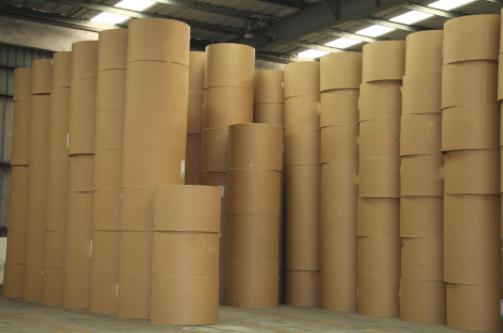
Kraft paper is created through a vulcanization process, which ensures that kraft paper is perfectly suited for its intended use. Because of increased standards for breaking resilience, tearing, and tensile strength, as well as the need for reduced stiffness and very high porosity, the highest quality kraft paper has high requirements for color, texture, consistency, and aesthetic value.
To meet color and aesthetic quality standards, the pulp must be bleached to achieve a brightness of between 24% and 34% while maintaining the pulp's yellow and red values fairly constant, i.e. maintaining the robustness of white pulp.
Kraft paper manufacturing process
The kraft paper manufacturing process includes the following stages.
1. Composition of raw materials
Any type of papermaking process is similar, differing only in quality, thickness, and the addition of additional characteristics. Kraft paper is made from long fiber wood pulp, and it has a higher physical property rating. The process yields a blend of softwood and hardwood pulp that meets the technical quality standards for premium kraft paper. Broadleaf wood pulp accounts for roughly 30% of total production. This raw material ratio has no effect on the physical strength of the paper, but it has a significant impact on the gloss and other criteria.
2. Cooking and bleaching
Kraft pulp must have fewer coarse fiber bundles and a consistent color, as well as meet the requirements for high-quality cooking and bleaching procedures. It is widely accepted that cooking and bleaching efficiency varies significantly between wood samples. If the pulp line can separate softwood and hardwood pulping, softwood and hardwood cooking and bleaching can be chosen. This stage employs combined coniferous and hardwood cooking, as well as combined bleaching after cooking. In the manufacturing process, quality defects such as inconsistent fiber bundles, coarse fiber bundles, and unstable pulp color are common.
3.Pressing
Improving the pulping process is a critical step toward increasing the toughness of kraft paper. In general, increasing the compression of the pulp while maintaining its good porosity and low stiffness is necessary to improve paper toughness, density, and uniformity.
Kraft paper has greater strength and quantifiable errors in vertical and lateral deviations. As a result, appropriate pulp to paper width ratios, screen shakers, and web formers are used to improve grades. The pressing method used to make the paper affects its air permeability, stiffness, and smoothness. Pressing reduces the porosity of the sheet, lowering its permeability and vacuum while increasing sealability; it can also increase the physical strength of the paper.
These are the ways in which kraft paper is usually made.
Post time: Nov-30-2022
